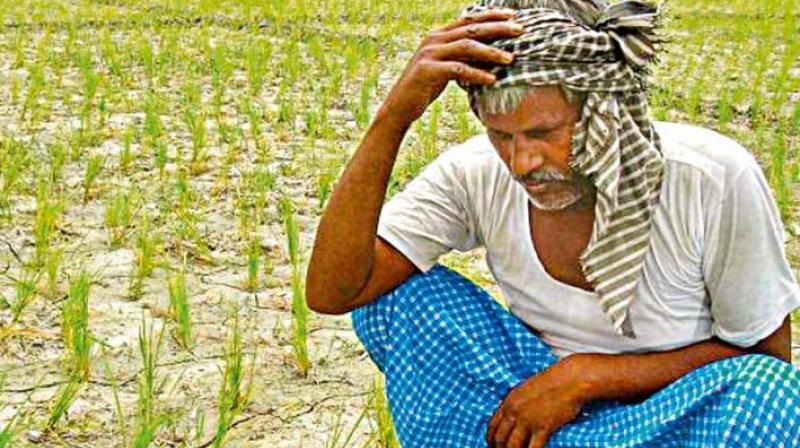Schemes fail to help Anantapur farmers

ANANTAPUR: With experiments, schemes and measures like cloud seeding not alleviating the drought situation in the district, at least 223 debt-ridden farmers have committed suicide since June 16, 2014 till October 19 this year in Anantapur district alone. More than 15 lakh acres of groundnut crop was damaged due to deficit rains during the Kharif season, causing massive damage to the farming sector. The crop loss has been estimated at about Rs 1,857 crore due to the failure of groundnut this year.
A peculiar situation was witnessed this year with the groundnut saplings not bearing any nuts in the roots. The government had declared all 63 mandals as drought-affected. Ms Bhanuja, chairperson of REDS NGO that has been fighting for the welfare of the families of farmers who have committed suicide, said that the government records showed only 98 farmer suicides in the last two and a half years but, “223 farmers committed suicide, mostly due to financial problems connected to crop failure and debts. Many of the cases weren’t recorded by the committees at the mandal level,” she said.
She has submitted a representation to the state government seeking financial assistance for the bereaved families. In the last 140 years, Anantapur, located in a rain shadow area, had received deficit rainfall in 70 years. Only a few years had reported above average rainfall. More than a thousand farmers in the district have committed suicide since 1998; the government does not have proper data about suicides in the years prior to this.
The farming community has suffered major losses for eight consecutive years of drought and no experiments, including the recent rain gun concept, made them confident. Agriculture minister Prathipati Pullarao had earlier said, “We might have been saved if the rain guns were used at le-ast 10 days earlier. It was delayed due to legal hurdles created by the YSRC.” Farmer Mr Venkatesh did not harvest crops on his 10-acre of groundnut fields and let in cattle for feeding.
Meanwhile, the district administration is continuing experimentations with rain guns to save nearly 70,000 acre of red gram, an inter-crop. “Saplings of red gram grow at least two and a half feet with the roots having a similar depth, but how can rain guns save the crops?” asked Mr K. Anandaranga Reddy, a farmer leader from Madakasira. Due to the peculiar location of the district and being far from the east coast and cut off from the Eastern Ghats, both seasons of the monsoon often bypass the Anantapur district, resulting in crop failures, drought situations and financial hardships to the farming community. In the last 32 years, the district has received less than normal rainfall, of 338.4 mm, in 19 years and less than 15 per cent normal rainfall in 12 years. Industrialist Mr G. Ramesh Babu, who depends on the groundnut crop, said that the poor yield was also leading to losses for traders and industries every year.

